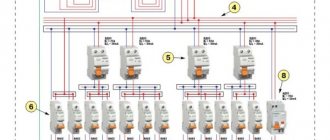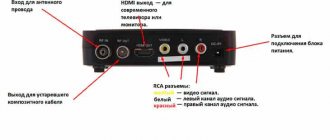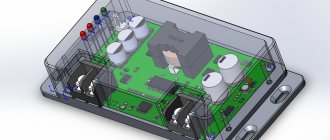Sound - what is it?
Sound is a physical phenomenon. These are elastic waves of mechanical vibrations propagating in a gaseous, solid or liquid medium. Sound is often considered to be those vibrations that are perceived by animals and people. The main characteristics of sound are amplitude and frequency spectrum. For people, the second indicator ranges from 16-20Hz – 15-20 kHz. Everything below this range is called infrasound, above - ultrasound (up to 1 GHz) or hypersound (from 1 GHz). The loudness of the sound determines the sound pressure and its effectiveness, the shape of the vibrations and their frequency, but the pitch of the sound depends on the magnitude of the sound pressure and frequency.
Analog to digital conversion
The audio signal can be analog or digital. If we consider an analog signal emanating from analog equipment, it is a continuous electrical signal. Digital sound is a signal represented by discrete numerical values of its amplitude. That is, such a signal is recorded in the form of numbers, and it is read by computer technology.
Analog audio can be converted to digital by processing the analog signal, giving it numerical values. This can be done in two stages. The first is sampling, during which values are selected from the signal to be converted at certain time intervals according to given values. The second is quantization: the process of breaking down values obtained by sampling sound amplitude values as closely as possible.
In analog-to-digital conversion, exact values are not used - all values are indicated rounded, since due to limitations in the RAM of the devices, it is impossible to indicate the real amplitude value - it is infinite.
Sampling frequency and bit depth
These two concepts are often discussed when describing digital recording devices. So, the sampling rate means the frequency at which the recording device samples the frequency of input signals. When analog audio is converted to digital, it is recorded as individual samples, that is, signal intensity values at specific time periods.
The sampling frequency most often has the following standard values:
- 44.1 kHz;
- 48 kHz;
- 96 kHz.
To obtain the best quality digital recording, you should use a higher sampling rate: due to the greater number of samples per second of time, the quality of the converted sound improves.
What is bit depth? When it comes to recording devices, we often hear units of information such as 16 bits, 24 bits, etc. They denote the number of units of information that can be used to represent the value of samples obtained during digital recording (and each sample separately). In this case, the higher the unit of measurement, the higher the quality of the resulting sound. However, it is worth considering that the value of sound intensity does not depend on the number of bits, but on the accuracy of its representation.
The main advantages of digital instruments over analogue ones
Page 1 of 2Next ⇒
Introduction
The purpose of this work is to consider the advantages of digital technology and their reasons.
Digital technologies, as such, rely on representing signals in discrete bands of analog levels rather than as a continuous spectrum. All levels within a band represent the same signal state.
Since the late 90s of the last century, it has been generally accepted that the future lies with digital technologies. In this work I will try to highlight the main reasons and theses of this point of view.
Analog signal
An analog signal is a data signal in which each of the representing parameters is described by a function of time and a continuous set of possible values. Such signals are described by continuous functions of time, which is why an analog signal is sometimes called a continuous signal.
The properties of analog signals largely reflect their continuity:
· The absence of clearly distinguishable discrete signal levels makes it impossible to apply the concept of information in the form as it is understood in digital technologies to describe it. The “amount of information” contained in one reading will be limited only by the dynamic range of the measuring instrument.
· No redundancy. From the continuity of the value space it follows that any noise introduced into the signal is indistinguishable from the signal itself and, therefore, the original amplitude cannot be restored. In fact, filtering is possible, for example, by frequency methods, if any additional information about the properties of this signal (in particular, the frequency band) is known.
Let's consider this type of signal using a simple example. During a conversation, our vocal cords emit a certain vibration of varying tonality (frequency) and volume (sound signal level). This vibration, having traveled a certain distance, enters the human ear, affecting there the so-called auditory membrane. This membrane begins to vibrate with the same frequency and strength of vibration that our sound cords emitted, with the only difference that the strength of vibration weakens somewhat due to overcoming the distance.
So, the transmission of voice speech from one person to another can be safely called analog signal transmission , and here's why.
The point here is that our vocal cords emit the same sound vibration that the human ear itself perceives (we hear what we say), that is, the transmitted and received sound signal has a similar pulse shape and the same frequency spectrum sound vibrations, or in other words, “analogous” sound vibration.
Now, let's look at a more complex example. And for this example, let’s take a simplified diagram of a telephone, that is, the telephone that people used long before the advent of cellular communications.
During a conversation, speech sound vibrations are transmitted to the sensitive membrane of the handset (microphone). Then, in the microphone, the sound signal is converted into electrical impulses, and then travels through wires to the second handset, in which, using an electromagnetic transducer (speaker or earphone), the electrical signal is converted back into a sound signal.
In the above example, again, “ analog ” signal conversion is used. That is, sound vibration has the same frequency as the frequency of the electrical impulse in the communication line, and also, sound and electrical impulses have a similar shape (that is, similar).
In the transmission of a television signal, the analogue radio-television signal itself has a rather complex pulse shape, as well as a fairly high frequency of this pulse, because it transmits both audio information and video over long distances.
Digital signal
A digital signal is a data signal in which each of the representing parameters is described by a discrete-time function and a finite set of possible values.
The signals are discrete electrical or light pulses. With this method, the entire capacity of the communication channel is used to transmit one signal. The digital signal uses the entire cable bandwidth. Bandwidth is the difference between the maximum and minimum frequency that can be transmitted over a cable. Each device on such networks sends data in both directions, and some can receive and transmit simultaneously. Narrowband systems transmit data as a digital signal of a single frequency.
A discrete digital signal is more difficult to transmit over long distances than an analog signal, so it is pre- modulated on the transmitter side and demodulated on the information receiver side. The use of algorithms for checking and restoring digital information in digital systems can significantly increase the reliability of information transmission.
It should be kept in mind that a real digital signal is analog in its physical nature. Due to noise and changes in the parameters of transmission lines, it has fluctuations in amplitude, phase/frequency of polarization. But this analog signal (pulse and discrete) is endowed with the properties of a number. As a result, it becomes possible to use numerical methods (computer processing) to process it.
As an example of a “digital signal” , let’s take the principle of transmitting information using the fairly well-known “Morse code”. For those who are not familiar with this type of transmission of text information, I will briefly explain the basic principle below.
Previously, when signal transmission over the air (using a radio signal) was just developing, the technical capabilities of transmitting and receiving equipment did not allow transmitting a speech signal over long distances. Therefore, instead of speech information, text information was used. Since the text consists of letters, these letters were transmitted using short and long pulses of a tonal electrical signal.
This transfer of text information was called transfer of information using Morse code.
The tone signal, due to its electrical properties, had a greater throughput than the speech signal, and as a result, the range of the transmitting and receiving equipment increased.
The units of information in such signal transmission were conventionally called “dot” and “dash”. A short tone meant a dot, and a long tone meant a dash. Here, each letter of the alphabet consisted of a specific set of dots and dashes. So, for example, the letter A was designated by the combination " .- " (dot-dash), and the letter B " -... " (dash-dot-dot-dot), and so on.
That is, the transmitted text was encoded using dots and dashes in the form of short and long segments of a tone signal. If the words “MORSE CODE” are expressed using dots and dashes, it will look like this:
The digital signal is based on a very similar principle of encoding information, only the units of information themselves are different.
Any digital signal consists of so-called “binary code”. Here, logical 0 (zero) and logical 1 (one) are used as units of information.
If we take an ordinary pocket flashlight as an example, then if you turn it on, it will seem to mean a logical one, and if you turn it off, it will mean a logical zero.
In digital electronic circuits, logical units of 1 and 0 are taken to be a certain level of electrical voltage in volts. So, for example, a logical one will mean 4.5 volts, and a logical zero will mean 0.5 volts. Naturally, for each type of digital microcircuit, the voltage values of logical zero and one are different.
Any letter of the alphabet, as in the example with the Morse code described above, in digital form, will consist of a certain number of zeros and ones, arranged in a certain sequence, which in turn are included in packets of logical pulses. So, for example, the letter A will be one packet of impulses, and the letter B will be another packet, but in the letter B the sequence of zeros and ones will be different than in the letter A (that is, a different combination of the arrangement of zeros and ones).
In a digital code, you can encode almost any type of transmitted electrical signal (including analog), and it doesn’t matter whether it is a picture, video signal, audio signal, or text information, and you can transmit these types of signals almost simultaneously (in a single digital stream) .
Analog devices
With the advent of electricity, people had the opportunity to use equipment powered by current. Every day more and more new devices appeared, science developed, technology improved. Back then, all inventions were considered analog. The word “analog” meant that the device works by analogy with something. To make it clearer, let's consider a measuring device. Let's say you need to build a graph of measurements; the measurement data themselves are known. The instrument will first derive an equation from the known data that describes the behavior of the graph, and then attempt to construct the graph. It works by analogy with an equation and strictly obeys its laws. And how accurately the equation describes the graph is not important to the device. Thus, analog electronic devices are devices for amplifying and processing analog electrical signals, made on the basis of electronic devices. There are two large groups into which analog electronic devices can be classified:
· Amplifiers are devices that, using the energy of a power source, form a new signal that is in shape a more or less exact copy of the given one, but exceeds it in current, voltage or power.
· Amplifier-based devices are mainly converters of electrical signals and resistances.
Electrical signal converters (active analog signal processing devices) are made on the basis of amplifiers, either by directly using the latter with special feedback circuits, or by slightly modifying them. These include devices for summing, subtracting, logarithming, antilogarithming, filtering, detecting, multiplying, dividing, comparing, etc. Resistance converters are based on amplifiers with feedback. They can transform the magnitude, type, and nature of resistance. They are used in some signal processing devices. A special class consists of all kinds of generators and related devices.
Digital devices
Digital are measuring instruments that automatically generate discrete signals of measurement information and give readings in digital form. By discrete we mean signals whose values are expressed by the number N of pulses. A system of rules for representing information using discrete signals is called a code. Discrete signals, unlike continuous ones, have only a finite number of values, determined by the selected code.
The main and mandatory functional units of electronic digital measuring instruments are analog-to-digital converters, in which the measured analogue, i.e. continuous in time, the physical quantity X is automatically converted into an equivalent digital code, as well as digital readout devices in which the received code signals N are converted into digital symbols of the decimal number system, convenient for visual perception. The digital form of presentation of the measurement result, compared to the analogue one, speeds up the reading and significantly reduces the likelihood of subjective errors. Since most digital measuring instruments contain preliminary analog converters designed to change the scale of the measured input value x or convert it to another value Y = f(x), more convenient for the chosen coding method, then in the general case the block diagram of the device is presented in the form of Fig. .
Block diagram of a digital measuring instrument
Modern digital instruments contain analog-to-digital converters capable of producing hundreds or more conversions per second, which makes it possible to record rapidly occurring physical processes and easily interface research objects with a computer. Digital devices are a new stage in the evolution of technology that operates on digital data.
For clarity, let's consider the same case - you need to build a graph based on given measurements. The device will not create an equation; it will divide the graph into small pieces, and based on the known data, calculate the coordinates for each piece. Then the device will plot each piece according to the obtained coordinates, and due to the fact that there are a huge number of such pieces, they will represent a continuous graph. This is how digital technology works.
The main advantages of digital instruments over analogue ones
A digital signal, due to its electrical properties (as in the example with a tone signal), has a greater information transmission capacity than an analog signal. Also, a digital signal can be transmitted over a greater distance than an analogue one, without reducing the quality of the transmitted signal. For example, a continuous audio signal transmitted as a sequence of 1s and 0s can be reconstructed without error, provided that the transmission noise was not sufficient to prevent identification of the 1s and 0s. An hour of music can be stored on a CD using about 6 billion binary digits. This is especially true in recent years, taking into account the enormous growth in transmitted information (increase in the number of television and radio channels, increase in the number of telephone subscribers, increase in the number of Internet users and the speed of Internet lines).
Storing information in digital systems is easier than in analogue ones. The noise immunity of digital systems allows data to be stored and retrieved without corruption. In an analog system, aging and wear can degrade the recorded information. In digital, as long as the overall interference does not exceed a certain level, information can be restored absolutely accurately.
Digital computer-controlled systems can be controlled using software, adding new features without replacing the hardware. Often this can be done without the involvement of the manufacturer by simply updating the software product. This feature allows you to quickly adapt to changing requirements. In addition, it is possible to use complex algorithms that are impossible in analogue systems or feasible, but only at very high costs.
When transmitting a digital television signal, the viewer will no longer see such a defect as “the image is snowy”, as was the case with an analog signal with poor reception. In the digital transmission of TV channels, the picture quality can only be good, or there will be no picture at all if the reception is poor (that is, either yes or no).
As for the digital transmission of telephone conversations, here, with good quality, both a whisper and a scream, both low and high tones, can be transmitted, and it does not matter at what distance the telephone subscribers are located.
Digital technology has always been superior to analog technology in accuracy. For example, let's compare analog and digital voice recorders. If you need to record voice information, a digital device will cope with the task better than an analog one. This will be noticeable in the recording quality. The fact is that an analog recorder does not reproduce information so accurately; noise will be mixed into the recording, while a digital recorder will filter out unnecessary noise, and accordingly the sound will be more believable.
Digital technology is smaller. The devices are built on microcircuits capable of performing addition and subtraction operations on numbers, hence their small size. Unlike analogue devices, data from modern devices can be quickly processed by computers. Of course, analogue data can also be placed in a computer, but it will first need to translate them into “its” digital language.
Digital technology is more economical and lasts longer. Microcircuits consume less energy and can work properly for a long time, while mechanical equipment will quickly fail.
Digital devices also boast:
· Small error. The accuracy of analog instruments is limited by the errors of the measuring transducers, the measuring mechanism itself, scale errors, etc.
· High performance (number of measurements per unit of time); When measuring time-varying quantities, performance plays an important role. If indicating priors do not require high speed, since the capabilities of the operator working with them are limited, then, on the contrary, the requirement of speed becomes important when processing information using computers, to which digital devices are often connected.
· Absence of subjective error in readings of the measurement result - subjective errors associated with the characteristics of human vision, due to parallax, due to the resolution of the eye.
Digital filter
Digital filter - in electronics, any filter that processes a digital signal in order to highlight and/or suppress certain frequencies of this signal. Unlike a digital filter, an analog filter deals with an analog signal; its properties are non-discrete ; accordingly, the transfer function depends on the internal properties of its constituent elements.
The advantages of digital filters over analog ones are:
· High accuracy (the accuracy of analog filters is limited by element tolerances).
· Stability (unlike an analog filter, the transfer function does not depend on the drift of the characteristics of the elements).
· Flexibility of configuration, ease of change.
· Compactness - an analog filter at a very low frequency (fractions of a hertz, for example) would require extremely bulky capacitors or inductors.
But there are also disadvantages:
· Difficulty working with high-frequency signals. The frequency band is limited by the Nyquist frequency, which is equal to half the signal sampling frequency. Therefore, analog filters are used for high-frequency signals, or, if there is no useful signal at high frequencies, they first suppress high-frequency components using an analog filter, then process the signal with a digital filter.
· Difficulty in real-time operation—computations must be completed within the sampling period.
· High accuracy and high speed signal processing requires not only a powerful processor, but also additional, possibly expensive, hardware in the form of high-precision and fast analog-to-digital converters.
1Next ⇒
Recommended pages:
Use the site search:
Jitter and quantization noise
ADCs also consider concepts such as jitter and quantization noise. Let's take a brief look at what they are.
So, jitter is called the phase jitter of a digital signal. In general, these are unwanted (random) phase and/or frequency deviations of the signal that are transmitted by the carrier. It may occur due to instability of the master oscillator due to changes in the parameters (time or frequency) of the transmission line. Jitter can manifest itself in the form of delays, signal attenuation, and noise.
In an ADC, jitter refers to the shift in the time period of the quantization moments during the digitization of analog audio. This is due to the imperfection of the clock signal, which sets the moment of sampling.
Quantization noise refers to errors that occur during the conversion of an analog signal to digital. May occur due to rounding or truncation of signals. Both of these phenomena affect the quality of the final sound. Therefore, to avoid these errors, during ADC, signal transfer from one register to another should be carried out as accurately as possible. In addition, it is important to use high-quality equipment for signal conversion: this applies to sound recording devices, power supplies, and quartz oscillators.
Advantages and disadvantages of analog audio signal
If we talk about the advantages of an analog signal both audio and video, then one of them is related to the fact that it is in this image and form that a person perceives it with his organ of hearing. And although a person’s hearing subsequently converts the signal into a set of impulses transmitted to the brain, modern technology has not yet learned to bypass the ears as the main organ of hearing and transmit the signal directly to the brain. Although it should be noted that these studies have been carried out for the last 70 years, and if they are successful, then the concept of human deafness will be over, but for now, every hearing person and who perceives them in full receives sound vibrations in the form of an analog signal. That is, an analog audio signal has high frequency depth, as well as good balance between high and low frequencies.
The main problem and disadvantage with using a pure analog signal is its storage, as well as the methods of replication and transmission. Recording on any of the analog audio storage devices is subject to demagnetization and mechanical damage, therefore, after a while, the information recorded on them significantly reduces the quality if it is played back. Vinyl discs are highly susceptible to scratches, and duplicating them is a rather problematic and time-consuming process. Making a copy of an audio signal recorded in analog format is almost the same as creating it again.
Digital to analog conversion
Once the audio has been converted to a digital signal, it must be converted back to analog audio in order to be heard. Digital-to-analog converters are used for this. Using audio interfaces as an example, let's look at how this process occurs. Analog audio enters the mixer (analog input) and is sent to the ADC where it is quantized and sampled. The resulting digital output signal goes through the same process, only in reverse: the data passes through a digital-to-analog converter, which turns it into an analog signal. In the diagram the process looks like this:
Analog TV
This television system uses an analog signal that arrives continuously to transmit pictures. Using an electronic circuit, this signal is converted into video and sound.
For analog TV, an antenna is sufficient. However, television of this kind today is considered obsolete and is gradually fading away. The main disadvantage of analogue broadcasting is the instability of the signal to interference, which contributes to the deterioration of picture quality.
Most modern states have long abandoned this type of television broadcasting, while other countries plan to do the same in the future. In Russia, the deadline for abandoning analog television was postponed several times to a later period.
Volume in digital audio
The volume of digital signals should not exceed 0db. If we do not take this nuance into account, we end up with digital signal overload at the input or output. This value is the highest point, that is, the peak value. It allows you to record high-quality sound and perceive it properly. If this value is exceeded, the signal is distorted and the equipment may be damaged due to overload.
In addition to the peak point, the concept of loudness also includes such an element as the RMS value. This concept defines the actual loudness level, which reflects the recording density and provides information about the loudness that our hearing is capable of perceiving. RMS is denoted in decibels, but with a minus value: the louder the sound, the higher the numerical value of RMS (maximally loud - -6db, maximally quiet - -20db). Optimal digital volume values are -12db - -10db.
Differences between a digital signal and an analog signal
For most people, the difference between an analog and digital signal can be quite subtle. And yet, their difference is significant and lies not simply in the quality of the television broadcast.
An analog signal is the received data that we see, hear and perceive as the world that surrounds us. This method of generating, processing, transmitting and recording signals is traditional and still very widespread. The data is converted into electromagnetic waves, reflecting the frequency and intensity of the phenomena according to the principle of complete correspondence.
A digital signal is a set of coordinates that describe an electromagnetic wave, which is not inaccessible to direct perception, without decoding, because is a sequence of electromagnetic pulses. Speaking about discreteness and continuity of signals, they mean, respectively, “taking values from a finite set” and “taking values from an infinite set.”
An example of discreteness would be school grades, which take values from the set 1,2,3,4,5. In fact, a digital video signal is often created by digitizing an analog signal.
You may be interested in: Indoor TV antenna general information
Moving away from theory, in reality we can highlight the following key differences between analog and digital signals:
- analogue television is vulnerable to interference that introduces noise into it, while the digital impulse is either completely blocked by interference and is absent, or arrives in its original form.
- Any device whose operation is based on the same principle as the transmitter’s broadcast can receive and read an analog signal. The digital wave is intended for a specific “addressee”, and therefore is resistant to interception, because securely encoded.
Image quality
The quality of the TV picture provided by analog TV is largely determined by the TV standard. The frame that carries analog broadcast includes 625 lines with an aspect ratio of 4x3. Thus, the old kinescope displays an image from television lines, while a digital image is made up of pixels.
Picture with analog signal
With poor reception and interference, the TV will “snow” and hiss, not providing the viewer with image and sound. In an attempt to improve this situation, cable TV was implemented at one time.
Picture with digital signal
Other options
Despite the rapid development of electronic technology and the advantages of digital signal over analog, there are still areas in which analog technology is indispensable, such as professional audio processing. But, although the original recording may be no worse than the digital one, after editing and copying it will inevitably be noisy.
Here is a set of basic operations that can be performed with an analog stream:
- strengthening and weakening;
- modulation, aimed at reducing its susceptibility to interference, and demodulation;
- filtering and frequency processing;
- multiplication, summation and logarithm;
- processing and changing the parameters of its physical quantities.
Stereophony and panorama
Stereophony is the recording, transmission or playback of an audio signal, in which auditory information about the location of the source of this signal is stored using the method of laying out the sound in a pair or more independent audio channels. With the right placement of music broadcasters, you can achieve immersive surround sound. This creates the feeling that sound with different phases comes from different sources.
Panorama is, in fact, the established direction of a sound source according to three spatial characteristics - distance, height and direction. Thanks to panning we get:
- uniform distribution of sound energy;
- differentiation of signal sources with the same range and sound frequency;
- special effects.
To create a high-quality sound panorama, it is necessary to correctly arrange the elements that supply the signal. Ideally it looks like this:
That is, the center channel of the sound source should be located between the left and right channels. This placement of stereo sources will allow you to get the most complete, clear and rich sound.
How to find out what kind of TV your TV shows: digital or analogue
Until October 14, 2021, analogue broadcasting will be stopped in those regions where it is still ongoing. Therefore, TV viewers want to understand what kind of TV they watch.
This question is relevant for residents of regions where both types of broadcasting are carried out. We are talking about the following territories:
- St. Petersburg and Leningrad region;
- Murmansk region;
- Vologda region;
- Pskov region;
- Belgorod region;
- Kaluga region;
- Kursk region;
- Astrakhan region;
- Volgograd region;
- Orenburg region;
- Saratov region;
- Chelyabinsk region;
- Altai Republic;
- Republic of Karelia;
- Republic of Crimea;
- Republic of Bashkortostan;
- Transbaikal region.
Residents of these regions have several ways to find out what kind of television is working in their home.
- Check if there is a letter “A” next to the name of the TV channel. It is used to designate analog channels; accordingly, if it is present, the TV shows ATV.
- If the TV is old and works without a receiver, it means analog television is connected.
- If the TV can receive an encoded signal without a receiver, you can determine the type of broadcast using the antenna plug. You need to take it out and hold it at a distance of half a centimeter from the socket. If the picture quality deteriorates, but the TV continues to show, it means that analog TV is being received. If the video disappears completely, DTV is connected.
- You can open the “Signal Source” section in the TV menu.
- Digital television is better than analogue in terms of picture quality, and if the picture is bright and very clear, it is most likely DTV.
It’s worth figuring out in advance what signal the TV receives so that you don’t end up without TV in the fall.
Important! Citizens who live in other regions and are connected to terrestrial TV definitely watch DTV, since they no longer have ATV.
Basic audio file formats
In fact, there are a lot of formats with which you can read audio files. But there are those that have received universal recognition. All of them are divided into three groups:
- uncompressed audio formats;
- with lossless compression;
- with lossy compression.
Let's look at the main audio file formats:
- WAV is the first audio format that could be processed by computer programs at a high professional level. Disadvantage: recording takes up too much space.
- CDs - The .cda extension cannot be edited, but it can be reformatted and saved with any audio processing program.
- MP3 codec is a universal format that compresses audio files as much as possible.
- AIFF files - the format supports monophonic and stereophonic data of 8 and 16 bits in size, was originally developed for the Macintosh, but after additional development it can be used on other OS platforms.
- OGG is a popular format, but it has disadvantages such as the use of its own codecs and decoders and overloading the computer's system resources.
- AMR is a low-quality audio format.
- The MIDI format allows you to edit a recording by pressing keys, changing tempo, key, pitch, and adding effects.
- FLAC is a format that reproduces audio in high quality.











